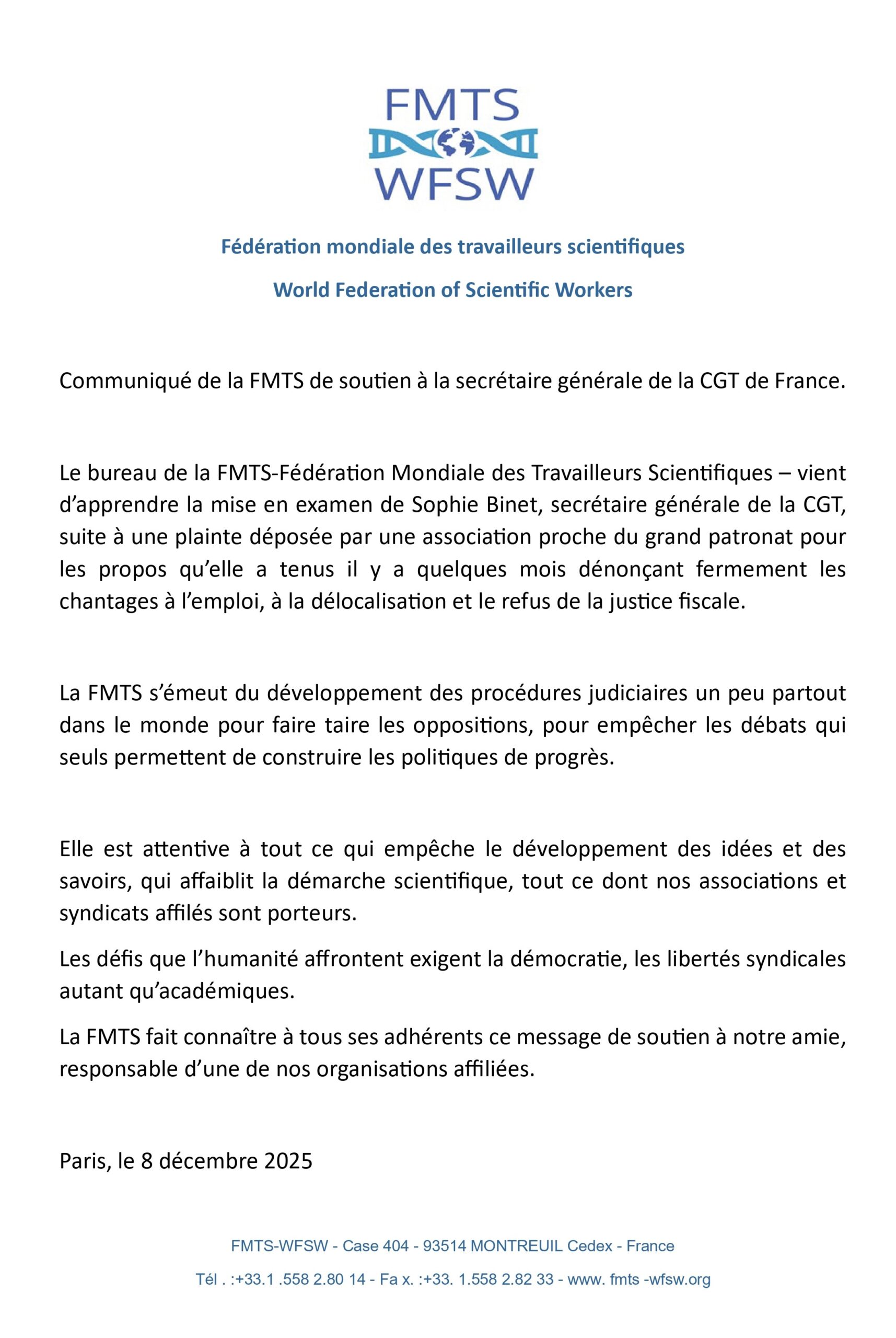Brain drain: Flow of brains from poor countries into the richest country
Working Paper by, J. P. Bazin, WFSW, March 2010
One aspect of economic war that makes richest countries misappropriating the most important richness of poorer countries in a flow of brains from poor to richer countries.
INTRODUCTION
The “Brain Drain (BD)” is a component of economic war being engaged by countries in increasing their development capacity and national wealth. Seen from this perspective it would be a narrow point of view, because the BD also responds to the legitimate desire of people to go to places delivering high-level teachings and offering potential career, it is an aspect of freedom that everyone, wherever it comes from should be eligible. The BD is characterized by a unidirectional mechanism that frequently contributes to increase still further the potential of rich countries to the detriment of poorer countries; it is therefore against any vision in the direction of a more just society in the worldwide. The BD is often hidden behind insidiously cooperation policies that only benefit on the fringe to less developed countries. It happens that nationalist or patriotic reflex causes a return of specialists in R&D to their countries of origin, but this may be profitable if there pre-exist strong structures of development. To analyze the effects of BD it should be tried to measure the importance and the different kinds depending on whether it is prevalent among so-called Western countries, between large developing countries and more developed countries, or between North and South (often called North-South). We will try to come up with proposals derived from the analysis.
G1 – BD BETWEEN so called DEVELOPED COUNTRIES
According to data reported by Alain Perez in the newspaper “Les échos (France)” of 21-01-2010, two concepts are inseparable: the “Brain Drain and Brain Gain (BG)” to qualify and quantify the flows to determine which ultimately is beneficiary of BD. The flow of brain drain between countries can be represented by a network rather complex to analyze, but that benefits in first analysis to the most developed countries. The country which attracts more scientists is the United States while the European Union is the largest provider of scientists reported to its population. Also according to Alain Perez, BD to the U.S. reached 30% from Ireland and over 15% from Greece, Austria and Great Britain. In the United States 55% of postdocs in science and engineering were foreigners (2002). Contrary to popular belief widely exploited politically, the BD from France to the USA is only 4% (41% of postdoctoral researchers) who return to 75% in France or in French multinational enterprises, but these percentages may vary from one discipline to another. The flow from the USA to France is low. Overall the proportion of Europeans graduates in the U.S. accounted for 17% of all graduates foreigners, resident in North America. The France with 106,000 students and 500,000 graduates of African origin is the main host in Europe (Also, all nationalities are represented). France remains an attractive country in Europe to eastern countries, Germany (balanced), and Great Britain (slight deficit). In summary, the USA is the first country in terms of BG and France, the second, probably because of its colonial past. Some countries like Portugal and Greece have a deficit inflow versus outflow on brain drain.
G2 – BD: THE COUNTRIES OF THE BRIC[1] AREA AND EAST OF THE European Union (EU) TOWARDS MORE DEVELOPED COUNTRIES
Deliberately were ranked in this category: Russia, countries of Eastern Europe, China, India, although they represent very different models.
Russia. (To be completed and validated by our Russian colleagues) The former USSR was the first world power in terms of number of scientists reported to its population with strengths in many scientific domains as: physics, biochemistry and mathematics[2], with a model of public organization primarily focused on the academies of science and military research. After the Berlin Wall Fall, the 750,000 scientists found themselves helpless: no more material resources, miserable wages when they were paid (funds spent on research decreased from 2% of GDP in 1990 to 1% in 1999). 25% of teachers and researchers have responded to the lure of the west between 1994 and 2004 for exile mainly to the U.S. and Israel, depopulating the largest and famous laboratories known as the Landau Institute in Moscow, up to 90% of their staff. Aware of the possible consequences, France had proposed in 1992 under the leadership of Edouard Brezin (President of the CNRS) and J. Y. Déault (French parliamentary), a cooperation mechanism that has not held faced to the greed of the United States. However, to limit the effects of BD of military brains, Europe, Russia, Japan and the U.S. created an Intergovernmental Science and Technology Institute (ISTC). A return movement is encouraged by the adapting difficulties of Russian Jews in Israel, and collaborations between European and Russian laboratories through contracts, grants and equipments. This policy is not without problems because it tends to create in Russia, a research system at different speeds which is denounced by the Russian trade unions.
Countries of Eastern-centre Europe. The problem is not very different from that of Russia, including countries that before the Wall Fall had a quality research in some scientific areas (Poland, Croatia, and Serbia). On the other side, the return flow is less clear. However, the countries of Central-Eastern EU have accelerated the brain drain because of the mobility opportunities offered by their admission into the EU. These countries, including Poland and Romania, suffered particularly of leaks of qualified personnel in the field of health, towards EU countries offering more attractive careers, which leads to desertification in medical field. The governments of these countries hope this is a temporary situation even an investment for the future, however without specifying any delay.
China. (To be completed and validated by our Chinese colleagues) This country, after the Cultural Revolution had to rebuild a search starting from a very low level. After an impressive progression, the country consecrated in 2007, 1.5% of its GDP to research, increasing by over 100% its research effort on the period 1998-2007. “According to the Chinese Academy of Social Sciences, 1.06 million Chinese students have gone abroad since 1978, to supplement their scientific studies. According to this source, only 275,000 have returned, after graduation or their post-doctorate. The others are installed in the host country and others have given up their original nationality. With a “loss rate” exceeding 70%, China is the leader (in total percent of its population) of scientific emigration and only India dispute it this unenviable title. The U.S. takes advantage for most of these migrant high-techs” (“Les échos”, July 2009). Globally, China has grown from a 3rd-largest contributor in 2007 in R&D behind the U.S. and Japan, and was at the 2nd rank ahead of Japan in 2010. With 1.5% of GDP, China is still below the average for OECD countries, but we must consider carefully the effect of mass in conjunction with the research policy, which at the scale of a so vast country, attempts to optimize the use of R&D budget that relies on regional expertise and private research and avoid as possible any duplication. This policy allows China to fairly easily create structures de novo based on available funds in addition to the return of top scientists who have been trained and have occupied high functions in the USA laboratories. China trains each year as many master’s and doctoral students in science and engineering than the U.S. or the EU according to a report from the NSF (2010). The unemployment rate of scientists is lower than in the general population, but tends to increase (1.8% to 5.4% from March 2008 to September 2009) (source: NSF Science).
India is largely a victim of BD. However India graduates 180,000 developers each year, but actual aggregated need of the country is critical, since this country has about 600,000 software and hardware engineers at its disposal while 1.5 million work in the USA. Head-hunters have 300,000 American special visas to attract Indian scientists.
South America. There is little data on the area where Brazil has recently released its relative isolation which is partly of linguistic origin. Each year 140,000 to 160,000 graduates leave the country (Marcio Pochmann economist, 2006) that led Brazil to establish a program to retain its doctoral and postdoctoral students in strategic fields. Mexico has a special structure of emigration because of its proximity to the U.S., which cannot be accurately analyzed in a limited survey of BD (for a full analysis see the article referenced[3]).
G3 – BD “SOUTH-NORTH” IN CENTRAL AMERICA AND AFRICA
Central America. More than half of graduates from Central America and the Caribbean live outside their country. Eight graduates Haitian and Jamaican among ten, living abroad (report of the World Bank, 2005).
Africa excluding North Africa and South Africa. (To be completed and validated by our African colleagues). The crucial problem of these African states is their inability to keep their citizens and / or bring them back to their countries or in different areas in Africa (Maghreb, Francophone and Anglophone areas).
The huge budgets spent by African States in training are largely diverted especially to former colonial countries and other destinations. This situation does not allow African competent, to contribute to the development of their countries. All this involved in a situation of unemployment, lack of welfare and poor governance.
While brain drain is addressed, it is usual to refer to university diploma level, nevertheless, African countries are still mostly in the pre-development stage, degrees obtained abroad do not necessarily match the needs of countries of origin. They become easy prey for emigration. Some states like the USA, Canada, France, have a policy to capture the best brains (green-card, selective immigration). The selective immigration can be an obstacle to return to country of origin. But overall, the reasons for not returning are roughly the same as those which have contributed to the departure, and paradox, not least, these countries often use for development projects, foreign brains which are very expensive (35% of aid given to Africa in 1996) to replace the local qualified workforce deficit that has migrated; a situation that could be called as post-colonial. According to the World Political Forum (AFI[4], Nairobi, 14-16 September 2009), 70,000 skilled Africans leave their home countries each year for Western countries. No sector is more affected than that of health (the 25 poorest countries have one physician for 25,000 inhabitants, while Western countries have 1 physician per 500 inhabitants). In sub-Saharan Africa, skilled workers make up only 4% of the total workforce but over 40% of them migrate to richer countries. The Maghreb. The situation in this geopolitical area is significantly different from the rest of Africa because the countries that constitute it are considered developing countries, thus having (insufficiently) manufacturing industries and services. However, although wages are higher than in the rest of Africa (excluding South Africa) they remain inadequate. The skilled and higher degrees seeking careers more stable than those offered in their countries having political and social context fluctuating, are easy prey to migration to the United States, Switzerland, France … The international companies in these countries also contribute greatly to the drain brain.
To illustrate this analysis, it is interesting to observe the situation for French health. In 2006, 6750 physicians (out of 94,000) at diploma outside the European Union were employed by France in non-status situation. 16% were from Morocco and Tunisia, 14.3% from Algeria and 12.7% from black Africa. These doctors paid three times less than a French physician, often on vacations, for the most burdensome tasks, enslaved workers, have no right to settle in the liberal sector or practice in a private institution, and so have no career opportunity. They are obviously discriminated. This situation whose Africans are victims, mask the lack of doctors trained in France.
CONCLUSIONS
From this analysis of BD, it follows that the situation made to the least developed countries is intolerable: loss of human capital, low returns to education, worsening of care, loss of contributions to GDP and taxes, social cost of morbidity and diseases, increased pressure on remaining staff and pressure on workers in host countries. The “benefits” that the country victims of BD can hope is the return of cash from their citizens ($ 305 million, for the entire world according to data from the World Bank in 2008), but balance is very unfavourable to the poorest countries. Moreover, the “advantage” of return is low and declining in general. The benefits are paltry compared to the global cost of training a scientist African migrant. This situation must be considered unlawful and prohibited as stipulated in the resolution 2417 of UN health[5]. The compensation should be a right, not a favour.
PROPOSALS…
The various situations in BD make difficult any proposal of universal character. Groups G1, G2 and G3 countries which appear as little arbitrary, and within these groups, the situation is far from homogeneous. The first idea that comes in mind is to reverse the BD. Is it possible even realistic? Certainly not, but it is of the same nature that of climate change regulation, fair allocation of natural resources (energy, food, ores,), that are questions of global governance. The proposition that is proposed further takes into account this difficulty by implementing a mechanism that could be progressively set up. Based on Resolution 2147 of United Nations, it seems logical to extend it to all areas with endemic Brain Loss (BL) by declaring it illegal and unacceptable especially for the poorest countries who suffer the most deleterious effects.
It nevertheless seems clear that the return of qualified people in their country of origin, even encouraged by financial assistance, can be effective only if the return occurs in a development context.
Brain loss (BL). It should be possible and productive to calculate each country’s index BL (in $) measured over a given period (e.g. 10 years). BL could be a ratio between advantages: return of cash, highly trained specialists and investment in training. In other hand each BD beneficiary countries could equally calculate its BG ($).
Compensation Fund. Two compensation funds administered by the IMF (assisted by a Democratic regulatory authority) should be abounded by countries in situation of BG proportionally to their gain: one fund for training and one fund for development. BL countries would have rights to draw on these funds based on training or developing project, depending on their situation. It is also possible to design similar mechanisms for blocks of countries like the EU. The drawing right for development is important for some countries, particularly in Africa, which see their natural resources looted without any possibility of setting up processing industries to enable them to achieve development. This mechanism which has the sole purpose of compensating the BL would not intended to substitute for existing aid programs to development.
Reversing the brain drain towards Africa? For African states expecting a significant return from their expatriates, Africa should view and affirm its commitment to development, good governance, and deep-seated democracy. These conditions should be made effective to access drawing rights. It should also make efforts on improving financial conditions and material incentive for brain to remain using the drawing rights on the compensation fund, especially for development.
Russia and India. Both these countries might be interested in developing collaborations by means of contractual agreements in R&D, with EU for Russia and United States of America for India, to balance the brain circulation, they also must increase their effort in R&D (India 0.75 of GDP in 2007, Russia probably under 1%). China is a special case, because this country has chosen, in a difficult development context, to give priority to research and engineering. Second-largest contributor to R&D, China is becoming an attractive country for scientists. This country could be able to reverse the flow of brain.




